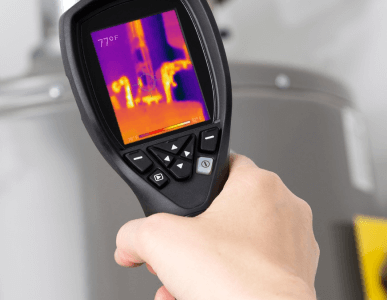What Thermal Imaging Can and Cannot Do
- Not X-Ray Vision: Thermal cameras detect surface temperature differences but cannot see inside walls.
- CANNOT detect moisture, mold, or termites: They only highlight temperature differences on the surface of the item being scanned.
- Not a Complete Solution: Thermal imaging is NOT a risk eliminator.
Environmental Limitations
Thermal imaging works best in cooler conditions, such as early morning or evening. Daytime inspections can yield inaccurate results due to the sun’s effect on surface temperatures. Achieving the ideal conditions for accurate scans might involve moving furniture and maintaining specific temperature differences, which is impractical during regular inspections.
Problems with Thermal Imaging
High-quality thermal cameras provide the best results, but many inspectors use lower-cost models that offer less accuracy. Some cameras may be up to 20% inaccurate, leading to potential misdiagnoses. Over-reliance on thermal imaging can result in confusing issues,which may create unrealistic or uninformed expectations without providing additional risk reduction.
While thermal imaging has its uses, it should not replace a thorough home inspection by a skilled professional. The experience and expertise of home inspectors remain the most reliable method for evaluating a home’s condition.
Whether you’re looking to buy a home, getting ready for a sale or building a home, The Home Inspectors is here for you every step of the way. We want to help you make confident, informed decisions about your home. Download a few of our FREE resources, schedule your home inspection online or get in touch with one of our experts.


